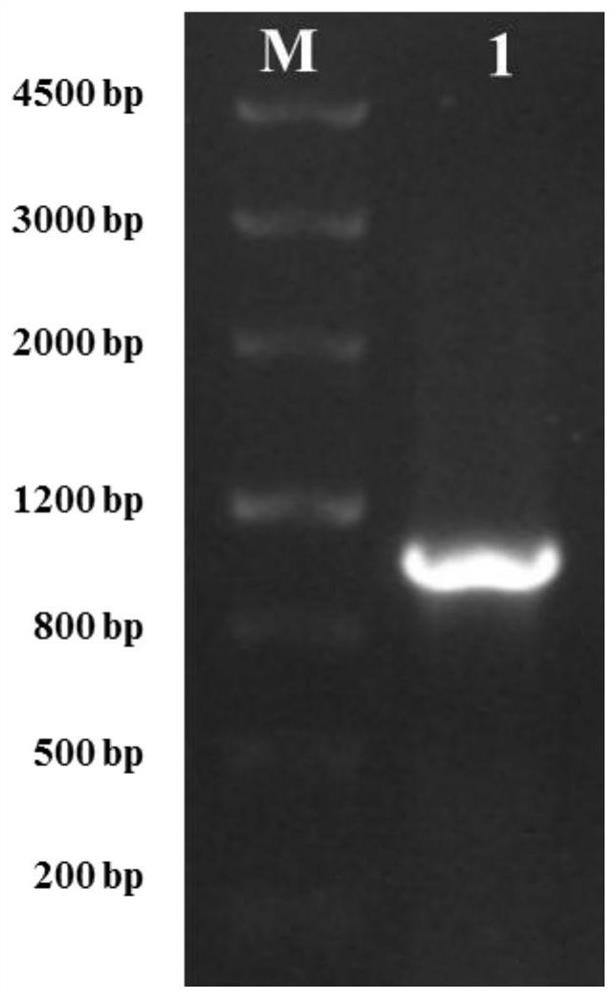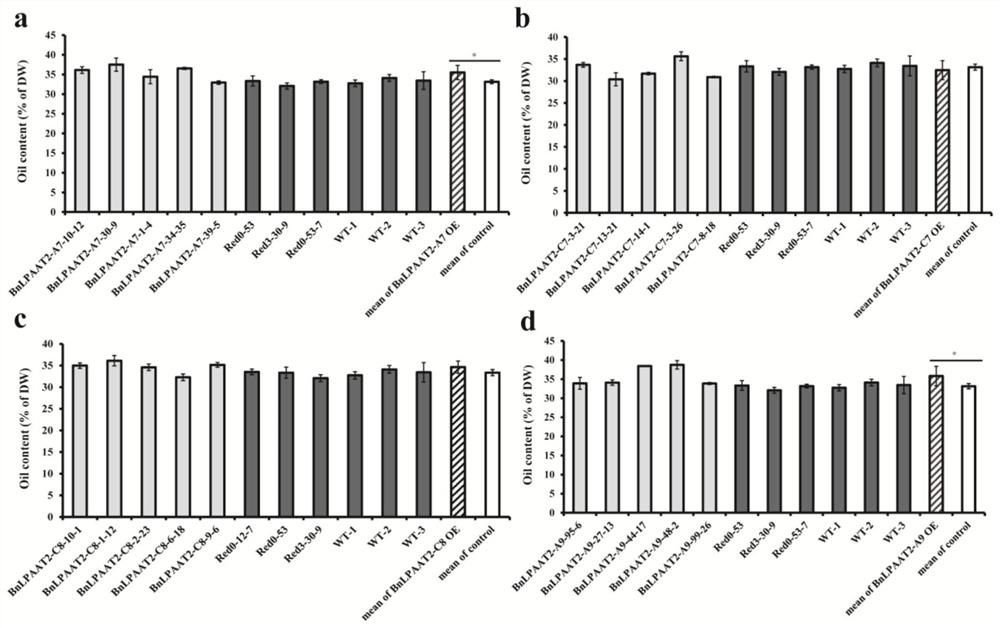Application of a gene that promotes the accumulation of linolenic acid in plant seeds
A plant seed and linolenic acid technology, applied in the field of gene application, can solve the problems of no obvious increase in the total amount of target fatty acids and a decrease in total oil content
- Summary
- Abstract
- Description
- Claims
- Application Information
AI Technical Summary
Problems solved by technology
Method used
Image
Examples
Embodiment 1
[0033] Cloning of BnLPAAT2 Gene in Brassica napus
[0034] (1) RNA extraction from developing seeds of Brassica napus
[0035] The pipette tips, centrifuge tubes and solutions involved in the following operations are free from RNase contamination, and all operations are performed with gloves on.
[0036] (1) Preparation of extract: take 500 μl of RL lysate, then add 5 μl of β-mercaptoethanol and mix well.
[0037] (2) Homogenization treatment: remove the pods from the developing seeds in liquid nitrogen, quickly grind them into powder, add 500 μl RL lysate, and vortex vigorously to mix. Centrifuge at 12000rpm for 5min, and absorb the supernatant.
[0038] (3) Transfer all the solution to the filter column CS, centrifuge at 12000rpm for 2min, carefully pipette the supernatant in the collection tube into a new RNase-Free centrifuge tube, and try to avoid contacting the cell debris in the collection tube with the tip.
[0039] (4) Add 0.5 times the supernatant volume of absolu...
Embodiment 2
[0057] Overexpression vector construction
[0058] (1) Construction of plant expression vectors and Agrobacterium transformation
[0059] The cloned gene sequence was used as a template to amplify with the high-fidelity enzyme KOD plus from TOYOBO Company, and the obtained gene fragment was recovered by agarose gel for use; take 40 μl of the plasmid of the plant expression vector pBinGlyRed3 and add 4 μl of EcoR I enzyme and 5 μl of digestion buffer After mixing, enzyme digestion was performed at 37° for 30 minutes, and the carrier was recovered by agarose gel for use. Take 2 μl of gene and plasmid recovery fragments respectively, add 1 μl of infusion kit mix to mix, and ligate at 50° for 20 minutes. The ligation product was transformed into Escherichia coli and positive plaques were obtained, and then the plasmid was extracted for use. The recombinant plasmid carries the glycinin promoter to drive the specific expression of LPAAT2 gene in seeds ( figure 2 ). The recombin...
PUM
 Login to View More
Login to View More Abstract
Description
Claims
Application Information
 Login to View More
Login to View More - R&D
- Intellectual Property
- Life Sciences
- Materials
- Tech Scout
- Unparalleled Data Quality
- Higher Quality Content
- 60% Fewer Hallucinations
Browse by: Latest US Patents, China's latest patents, Technical Efficacy Thesaurus, Application Domain, Technology Topic, Popular Technical Reports.
© 2025 PatSnap. All rights reserved.Legal|Privacy policy|Modern Slavery Act Transparency Statement|Sitemap|About US| Contact US: help@patsnap.com



